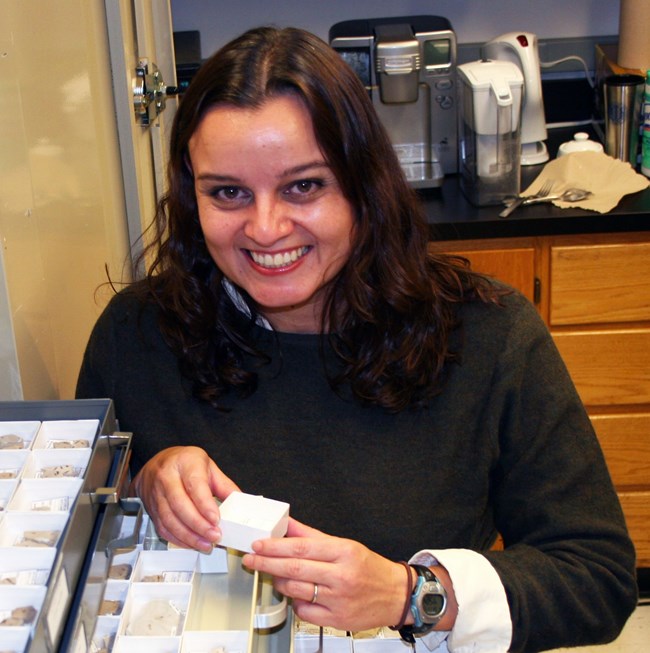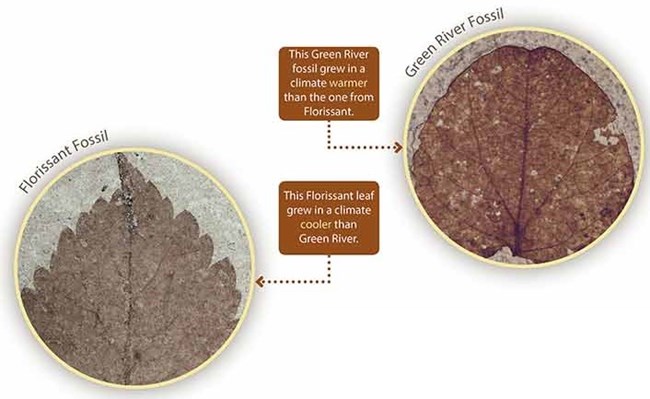
Plants, Insects, and the FutureBy looking at a time of climate change in the past, we can gain a better understanding of how our warming world may change in the future. As the world warms, we can expect to see an increase in insect damage to plants... with serious consequences for forests and essential food crops.Modern insects threaten important crops. Climate change could increase insect damage to crops if global warming continues. As a result, many everyday purchases- including food- would become more expensive, and the risk of famine would increase due to crop failure. 
A Complex InteractionHave you ever planted a garden only to have your flowers or vegtables become tasty treats for tiny pests. If so, you know that insects often leave their marks on plants by chewing, cutting, and laying eggs. The fossil record shows that plants and insects have had similar relationships for millions of years. Ancient evidence of plant-insect interactions are clearly seen on many of Florissant's fossil leaves.Dr. Smith wanted to know how changes in climate since the Eocene have affected the way insects use plants. Higher Temperature: More Leaf DamageDr. Smith's method of studying Florissant's ancient plant-insect interactions included collecting fossil leaves from shale. In this study, the leaves were brought back to the lab for cataloging, identification, and measurements. The amount and type of damage observed in teh Florissant leaves was recorded and compared to fossil leaves from teh Green River Formation in northwestern Colorado. The Green River fossils are nine to 13 million years older than Florissant's fossils and grew in a warmer climate.The Florissant leaves show less insect damage overall than those from the Green River. This Comparison illustrates a strong connection between the amount of insect damage and termperature. Warmer periods of geologic time appear to show more insect damage on fossil plants than those living in cooler climates. These interactions greatly influence the way plants and insects evolve together in response to changing climate. Who's Responsible? Finding the CulpritsKnowing exactly which insectes were responsible for each damage pattern remains a mystery for many of Florissant's fossil leaves. However, modern plant-insect interactions help us take a guess:Leaf Cutting: These neatly cut circles were no accident- and a leaf-cutting bee might have carried away the missing pieces to line its nest. Margin Feeding: Whoever nibbled on this leaf appears to have been a picky eater! why do you think an insect would avoid chewing on leaf veins? Hole Feeding: The holes in this fossil leaf probably resemble insect damage you've seen in your backyard. 
|
Last updated: September 17, 2022
